67 F. high in the Twin Cities Monday.
66 F. average high on September 29.
77 F. high on September 29, 2013.
.07″ rain fell Monday at MSP International Airport.
September 30, 1995: Lightning started a house on fire in Washington County.
September 30, 1985: 4 inches of snow fell in Ely, with just a trace at the Twin Cities.
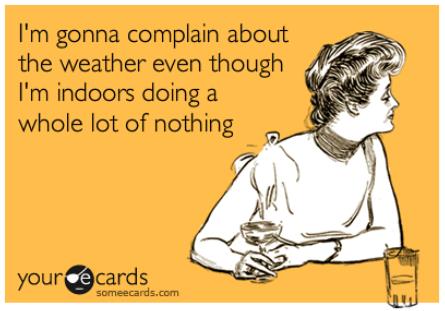
Perspective
It is our God-given right to complain about the weather. It may even be in the founding father’s Bill of Rights, but my history is a bit hazy. Don’t quote me.
Locals were complaining in 1961 when a coating of snow fell at MSP on September 30. A far cry from 1897, when the mercury soared to 87F on today’s date.
Cathy Larson wrote me a note, asking me to start a campaign to stop readers from griping about the weather. She has a chronic illness and would gladly endure another Polar Vortex if she was healthy again. “Being aware of the weather is important, but people complaining that it’s too hot or too cold – really??” she said.
Cathy has a very good point, and I’ll be drafting a bill for the legislature, right after my rodeo career fades. Stop whining about the weather?
Not. Likely.
The approach of a reinforcing cool front sparks showers tonight & Wednesday; a rumble of thunder is possible with slower commute times tomorrow. By Friday it’ll feel like early November: raw and windy with showers for evening football games. Take a heavy jacket.
We may avoid a frost next weekend; 40s to low 50s with ragged clouds for the Twin Cities Marathon.
A bit chilly, yes, but I’m not complaining.

Looks Like October. Enjoy low 60s, because by Friday it may feel more like early November than early October with temperatures stuck in the 40s, a raw wind and PM showers that will make evening football anything but pleasant. The best chance of rain comes tonight and Wednesday – long range guidance hinting at a few 60s returning next week. That may be it for the 80s, although I suspect a good chance of a few more days above 70F later in October. MSP Meteogram: Weatherspark.

Second Surge. A reinforcing cool frontal passage arrives with more showers from the Dakotas tonight and Wednesday; the atmosphere aloft marginally unstable enough for a few thunderclaps at no extra charge. We dry out Thursday before a stronger push of cold air arrives on Friday. By the end of the week there will be no doubt in your mind that it’s October. 4 KM NAM accumulated rain map: NOAA and HAMweather.

Shifting Gears. With a sun angle as high in the sky as it was in mid-March coupled with longer nights brewing up colder air over Canada, it’s little surprise that cold fronts are venturing farther south, whipping up a band of showers stretching from the Plains into the Mississippi Valley and Great Lakes over the next 36 hours. The west coast stays mainly dry; storms capable of flash flooding for portions of the southeast.

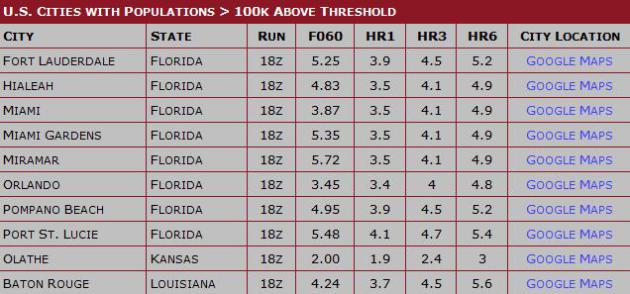
Flash Flood Potential. Our in-house Alerts Broadcaster model guidance show a risk of some 5-6″ rains from near Miami to Orlando, westward to Baton Rouge over the next 48 hours.

70 Years Ago Hurricane Hunters Got Their Start In The Great Atlantic Hurricane of 1944. You have to wonder how that first conversation went. “Hey, we could FLY into hurricanes to learn more about them!” Was this guy promoted or institutionalized? Here’s an excerpt of a good recap of how far we’ve come from Jack Williams at Capital Weather Gang: “Seventy years ago, four U.S. Army Air Forces crews made seven flights into the Great Atlantic Hurricane of 1944, proving the value of direct reports from inside tropical cyclones for forecasting purposes. Since then, air crews who have flown into hurricanes continue to help the National Hurricane Center make better, life-saving forecasts. Even with our advanced satellites and computer models, National Hurricane Center forecasters consider the information collected by airplanes flying directly through hurricanes invaluable for predictions...”
Photo credit above: “The Air Force flies WC-130 planes to study active hurricanes.” (NOAA)

Offshore Wind Turbines Could Tame Hurricanes. I’m a little skeptical about this idea, especially for larger hurricanes, since hurricanes get their strength from warm ocean water – not sure what a necklace of wind turbines will do to change that dynamic. Here’s a clip from The Wall Street Journal: “Could an armada of giant windmills reduce damage from the next big hurricane? A study by scientists at Stanford University and the University of Delaware suggests that U.S. coastal cities could be spared by installing tens of thousands of gigantic wind turbines offshore in arrays up to 20 miles long. The scientists say the turbines, as high as a football field is long, would suck much of the energy out of storms and pay for themselves with the clean electrical power they produce…” (Hurricane Sandy file image: NASA).

MIT’s New Cement Recipe Could Cut Carbon Emissions By More Than Half. Gizmag has the scoop – here’s the introduction: “As one of our most relied upon construction materials, concrete makes a significant contribution to our overall carbon emissions. Calcium-based substances are heated at high temperatures to form the cement, a process that produces carbon dioxide. But by slightly altering the quantities of materials used, scientists from MIT have uncovered a new method of concrete mixing that could reduce these emissions by more than half...”

At CIA Starbucks Even The Baristas Are Covert. This one was just too good to pass up, courtesy of The Washington Post; here’s an excerpt: “…The baristas go through rigorous interviews and background checks and need to be escorted by agency “minders” to leave their work area. There are no frequent-customer award cards, because officials fear the data stored on the cards could be mined by marketers and fall into the wrong hands, outing secret agents…”

Pepperoni Pizza Cake? It comes with a heart surgeon on the side. That said, maybe I need to sample it at least once, just to make sure I don’t like it. Buzzfeed has the details.
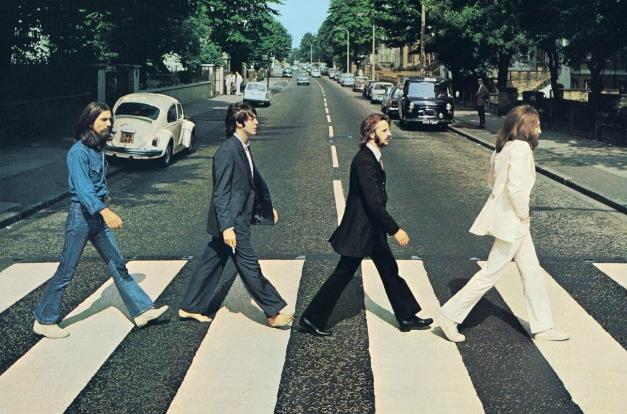
10 Things You Probably Didn’t Know About “Abbey Road”. Ultimateclassicrock.com has the details, including how the title got its name because the Beatles were feeling lazy at the time; here’s a clip: “…The album’s working title was “Everest”, an inside joke about the brand of cigarettes smoked by engineer Geoff Emerick. They had intended to shoot the cover photo at Mount Everest, but none of them wanted to make the long journey. Instead, McCartney suggested naming it after the street on which EMI Studios was located. That meant they could photograph themselves in the nearest crosswalk, which took about 30 minutes total…”
Read More: 10 Things You Probably Didn’t Know About ‘Abbey Road’ | http://ultimateclassicrock.com/abbey-road-facts/?trackback=fbshare&trackback=tsmclip
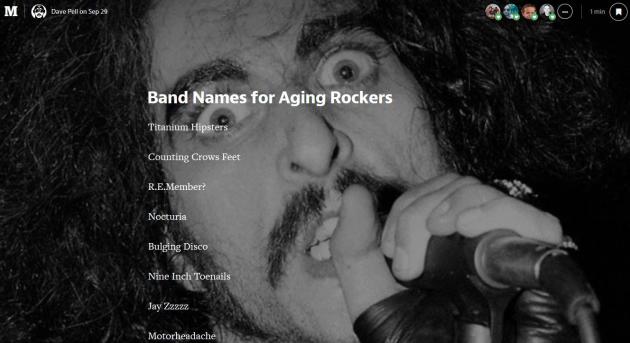
Band Names for Aging Rockers. Thanks to Dave Pell and Medium for brightening an otherwise blah day.
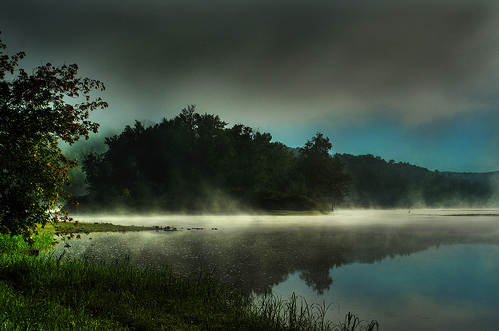
TODAY: Fading sun, late PM showers. Winds: E 10-15. High: 63
TUESDAY NIGHT: Showers likely. Low: 57
WEDNESDAY: Unsettled with showers, few T-showers. High: 62
THURSDAY: Partly sunny, drying out. Wake-up: 56. High: 67
FRIDAY: Windy & raw. PM showers likely. Wake-up: 47. High: 51 (chill factor dipping into the 30s)
SATURDAY: Slight frost risk early. Chilled sunshine. Wake-up: 38. High: 57
SUNDAY: Mostly cloudy and brisk. Wake-up: 45. High: 62
MONDAY: Plenty of sun, less wind. Wake-up: 43. High: 59
Climate Stories…

Scientists See Climate Change Behind Incidents of Wild Weather. Here’s the introduction to a story from CBS News: “Scientists looking at 16 cases of wild weather around the world last year see the fingerprints of man-made global warming on more than half of them. Researchers found that climate change increased the odds of nine extremes: Heat waves in Australia, Europe, China, Japan and Korea, intense rain in parts of the United States and India, and severe droughts in California and New Zealand. Scientists couldn’t find a global warming link to an early South Dakota blizzard, freak storms in Germany and the Pyrenees, heavy rain in Colorado, southern and central Europe, and a cold British spring…”
Photo credit above: “The Hindu holy town of Kedarnath, India is seen from a helicopter after severe flooding in the northern Indian state of Uttarakhand, June 18, 2013. Torrential monsoon rains caused havoc in northern India leading to flash floods and landslides.” Source: AP.

Source Of The Sizzle: Climate Change Fueled Heat Waves. Following up on the NOAA report referenced above; here’s an excerpt of a slightly different perspective from USA TODAY: “…Extreme events are often complex and influenced by multiple factors, said Thomas Karl, director of NOAA’s National Climatic Data Center and report co-author at a press briefing on Monday. Natural variability is always part of any weather and climate extreme, and pinpointing the human influence for an event is not always found in these studies, he said. “It’s a granted that climate change is influencing all manner of weather,” according to NOAA research meteorologist Martin Hoerling. “This report looks not if climate change influenced weather, but how it did – trying to quantify the influence,” Hoerling said at the press briefing...”
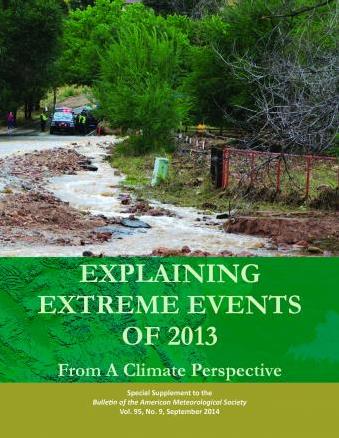
Explaining Extreme Events of 2013 From A Climate Perspective. A recent NOAA NCDC report suggests that climate change acted as an accelerant, making some extreme events (that would have happened anyway) even more extreme, especially heat waves. Credit: Bulletin of the American Meteorological Society.
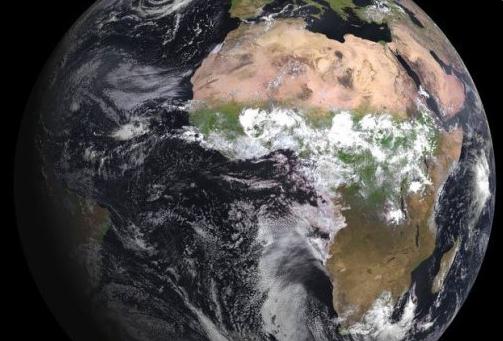
Global Warming: There’s No “Planet B”. Here’s an excerpt of an Op-Ed from The Star Tribune Editorial Board: “…Already, the real momentum is coming from local political leaders, enlightened corporate executives and, frankly, people in the streets. Among the states, Minnesota has emerged as a leader thanks to the foresight of former Gov. Tim Pawlenty and others who, in 2007, committed the state to a timetable for reducing emissions. California and several northeastern states have gone further by forging cap-and-trade agreements that raise the cost of polluting. Meanwhile, the Rockefellers, a family that amassed a mega-fortune on oil, have joined a movement to disinvest in fossil fuels. And the Norwegian petroleum giant Statoil has courageously embraced the idea of a global carbon tax...”
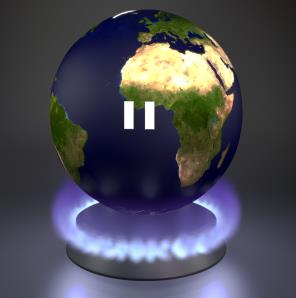
Is Global Warming Really Paused? Here’s a clip from a story at Decoded Science: “…Based on the most recent work, it appears that the oceans are a more likely explanation for the pause than aerosols, since the amount of missing heat is too large to be explained by a decrease in incoming solar radiation alone. It is more likely that the ocean is storing the bulk of the excess heat, since water has a much greater capacity to store heat than the air. Although there is agreement (for the most part) among atmospheric scientists that the ocean is responsible for the global warming pause, there is disagreement as to whether the Atlantic or the Pacific Ocean plays a greater role. In early August, research was published that pointed to a trade wind anomaly in the Pacific Ocean as the cause of suppressed atmospheric warming…”
Image credit above: “Is global warming really paused?” Image courtesy of Lesserland, modified by Elizabeth Klusinske.

Floods, Forest Fires, Expanding Deserts: The Future Has Arrived. We’ve gone from theory to reality, according to this article at The Guardian; here’s an excerpt: “…Perhaps most alarming of all the forecasts that concern the future warming of our planet is the work of Camilo Mora at the University of Hawaii. His research – which involved using a range of climate models to predict temperatures on a grid that covered the globe – suggests that by 2047 the planet’s climate systems will have changed to such an extent that the coldest years then will be warmer than even the hottest years that were experienced at any time in the 20th century. “Go back in your life to think about the hottest, most traumatic event you have experienced,” Mora said in an interview with the New York Times recently. “What we are saying is that very soon, that event is going to become the norm...”

How Melty Was The Arctic Sea Ice This Year? It looks like the 6th greatest loss of polar ice. Science writer Greg Laden puts things into perspective at scienceblogs.com: “…Looking at JUST surface area, which is one indicator of how warm the Arctic has become with Global Warming, we can see (above) that this years march of melting has been extreme, hugging the two standard deviation limit for all of the data from 1979 to 2010 (almost the present). Here you can see that 2014 is distinctly different, with much more surface area loss, than the first ten years of this data set, from here…”
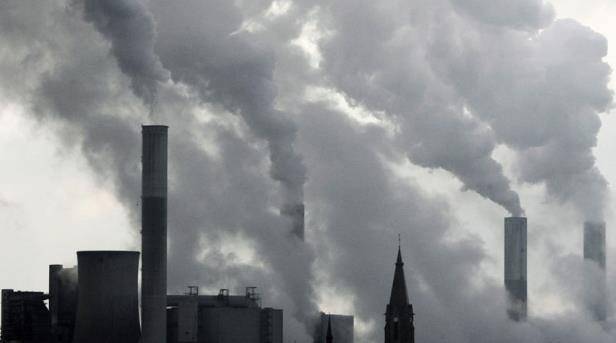
How Big Business Can Help Fight Climate Change. When going green puts more green back into consumer and company pockets – and we’re pretty much there, as Bob McDonald at CBC News explains; here’s an excerpt: “…For decades, the business community has known that going green usually makes money. It’s already been demonstrated at the simplest level, with examples such as hotels that have installed low-flush toilets and efficient shower heads, and then recouped those costs through savings in a very short time. The same is true for investments in better building design and more public transit. The changes were not just to save energy and reduce emissions; it was because it made good business sense…”

Climate Change Threat: As Global Leaders Stall, Cities Move To Cut Emissions, Boost Efficiency. Here’s the intro to a story at International Business Times: “In the face of global and federal paralysis on climate-change policy, local officials in the U.S. are already moving to cut their cities’ emissions and make their infrastructures less vulnerable to environmental threats. In Dubuque, Iowa, municipal leaders are rolling out data technology to help residents use less water and electricity. In Philadelphia, city experts are restoring watersheds and planting gardens to soak up the residue of heavier rains and rising sea levels, both effects related to global warming. However, few cities are doing more to confront climate change than New York, where Mayor Bill de Blasio appears keen to build on the environmental agenda of his predecessor, Michael R. Bloomberg…”

Climate Change Linked To Spread of Lyme Disease. Here’s an excerpt from EcoWatch: “As if we needed another reason to deplore the impacts of climate change, its warming effects are encouraging the northward spread of Lyme disease, carried by the black-legged tick which rides on deer, rodents and dogs, the Daily Climate reports. While common in the U.S., it was rare in Canada until recently. Because of that, Canadians eventually diagnosed with the disease were delayed in getting appropriate treatment…”
Image credit above: “The range of the black-legged tick, which carries Lyme disease, is expanding north due to the warming effects of climate change.” Photo credit: Shutterstock.

U.S. and Climate Change: Here Are The Top 10 Greenest Cities in America. No sign of Minneapolis, St. Paul, Rochester or Duluth yet, at least according to this analysis from International Business Times; here’s an excerpt: “… The number of so-called LEED-certified buildings (i.e., structures designed with minimal nonrenewable energy use and reduced water consumption) is also a good gauge of a city’s ecological consciousness. Cities with high proportions of green space also get two (green) thumbs up. Based on these and other criteria, below are the 10 greenest cities in the U.S., in no particular order:
1. San Francisco. The city’s curbside compost pickup program is just one of its many eco-friendly features. It was also the first U.S. city to ban plastic grocery bags.
2. Chicago. Chicago has more green roofs (i.e., roofs partially or completely covered in vegetation) than does any other city in the U.S. Green roofs help cut the amount of energy it takes to heat and cool a building, while also improving air quality…”

